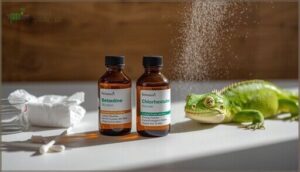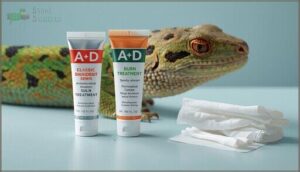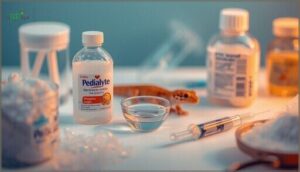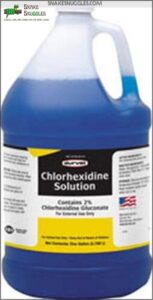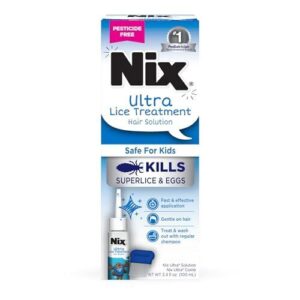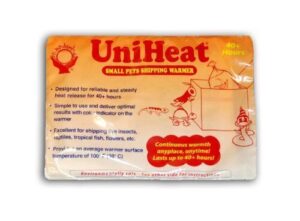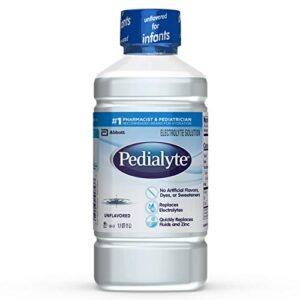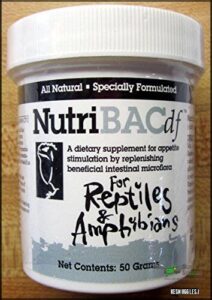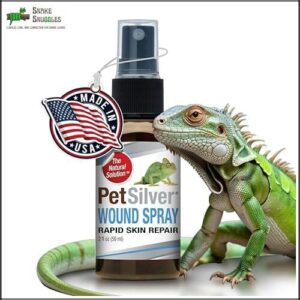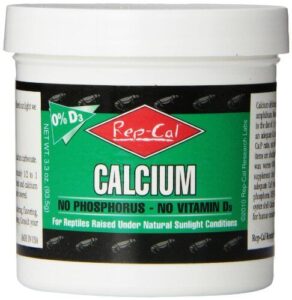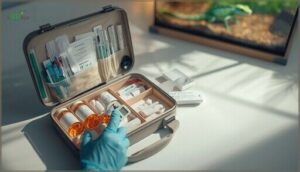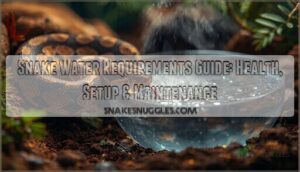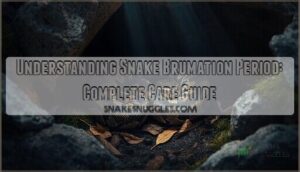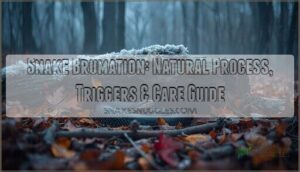This site is supported by our readers. We may earn a commission, at no cost to you, if you purchase through links.
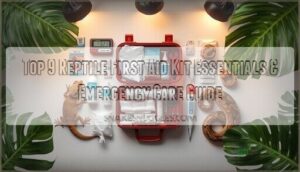
Your bearded dragon slices its foot on a cage decoration at 9 PM on a Saturday. Your ball python develops a respiratory infection during a holiday weekend. Your tortoise shows signs of shell rot while you’re hours from the nearest exotic vet. These scenarios happen more often than most reptile owners expect.
Emergency veterinary care within 12 hours improves survival rates by 31%, but having the right supplies on hand can stabilize your pet and prevent minor issues from becoming life-threatening crises.
A properly stocked reptile first aid kit bridges that critical gap between recognizing a problem and getting professional treatment. From antiseptic solutions and wound care supplies to thermal regulation tools and hydration products, certain essentials can mean the difference between a treatable injury and a tragic outcome.
Table Of Contents
- Key Takeaways
- Essential Supplies for a Reptile First Aid Kit
- Top 9 Reptile First Aid Kit Products
- 1. Leader Povidone Iodine Antiseptic Solution
- 2. Durvet Chlorhexidine Solution for Horses Dogs
- 3. Nix Ultra Lice Treatment Solution
- 4. Uniheat 40 Hour Shipping Warmer Pack
- 5. Pedialyte Unflavored Electrolyte Solution Hydration Drink
- 6. Nutribac Reptile and Amphibian Supplement
- 7. Ozeri Pronto Digital Kitchen Food Scale
- 8. PetSilver Reptile Wound Care Spray
- 9. Rep Cal Calcium Powder Reptile Supplement
- Wound Care and Emergency Treatments for Reptiles
- Must-Have Tools for Reptile First Aid
- Maintaining and Updating Your Reptile First Aid Kit
- Frequently Asked Questions (FAQs)
- What is the first aid spray for reptiles?
- Is liquid bandage safe for reptiles?
- What to put in a pet first aid kit?
- What do all reptiles need?
- How often should I replace kit items?
- Where should I store my reptile kit?
- When should I call a veterinarian immediately?
- Can medications expire for reptile use?
- How do I restrain different reptile species?
- How often should reptiles get veterinary checkups?
- Conclusion
Key Takeaways
- Emergency veterinary care within 12 hours improves reptile survival rates by 31%, but having proper first aid supplies at home can stabilize your pet and prevent minor issues from becoming life-threatening before you reach professional help.
- Your reptile first aid kit needs core antiseptics like diluted Betadine and chlorhexidine, wound care supplies including styptic powder and gauze, barrier ointments such as silver sulfadiazine for burns, and hydration products like properly diluted Pedialyte for oral rehydration during emergencies.
- Proper wound treatment requires species-specific approaches—flush cuts with dilute antiseptics, apply cold compresses to burns for 15 minutes, use non-adherent dressings that maintain moisture without sticking to delicate skin, and change bandages daily during acute healing phases.
- Maintenance matters as much as stocking your kit—check supplies twice yearly for expiration dates since medications lose up to 60% effectiveness after expiring, store everything in a cool dry location between 59-77°F within 60 seconds of enclosures, and keep detailed treatment logs documenting each emergency for pattern recognition and veterinary communication.
Essential Supplies for a Reptile First Aid Kit
Having the right supplies on hand can make all the difference when your reptile needs immediate care. A well-stocked first aid kit gives you the tools to address minor injuries and stabilize your pet before reaching a veterinarian.
Let’s look at the essential items every reptile owner should keep ready.
Antiseptic Solutions (Betadine, Chlorhexidine)
You need two antiseptic solutions in your reptile first aid kit. Betadine (povidone iodine) and chlorhexidine solution both fight bacteria and fungi effectively.
Always dilute Betadine to 1% and chlorhexidine at 1:32 to prevent chemical burns on delicate reptile skin. Apply these disinfectants with cotton swabs rather than soaking your reptile. Avoid sensitive areas like eyes and mouth to minimize adverse reactions.
For inhibiting infections, consider using Betadine as antiseptic.
Wound Cleaning and Disinfecting Agents
Beyond antiseptics, you’ll want veterinary-grade disinfectants for deeper wound cleaning. F10SC Veterinary Disinfectant stands out for its F10 efficacy against bacteria, fungi, and spores at 1:250 for routine use or 1:100 for serious contamination.
Chlorhexidine safety profiles make it ideal for topical application on sensitive tissue. Follow dilution ratios carefully—infection prevention depends on proper concentration and contact time.
For best results, consider using reptile safe products to minimize risks.
Bleeding Control (Styptic Powder, Gauze)
When minor injuries occur during nail trims or handling, you need fast hemostatic agents. Styptic powder—usually containing ferric subsulfate—triggers blood coagulation within seconds on superficial wounds.
Keep sterile gauze pads handy for applying direct pressure and absorbing blood while the styptic works. This combination manages most small-scale reptile hemorrhage effectively, though deep wounds or bleeding lasting beyond 30 minutes demands immediate veterinary emergency response.
Moisturizing and Burn Ointments (A+D, Silver Sulfadiazine)
After controlling bleeding, protect injured tissue with barrier ointments. Silver sulfadiazine ointment blocks bacteria from entering second- and third-degree burns—your go-to for serious thermal injuries. A+D ointment locks moisture into dry scales and helps stuck shed resolve within 3-7 days. Keep both on hand for different wound healing needs:
- Silver sulfadiazine for burn treatment and infection control
- A+D ointment for skin hydration and shedding issues
- Apply silver ointment once or twice daily after wound cleaning
- Use plain A+D for topical application, avoiding facial areas
Hydration and Electrolyte Solutions (Pedialyte)
Dehydrated reptiles lose critical minerals alongside water. Unflavored Pedialyte restores electrolyte balance when diluted 1:1 with water and given orally via syringe. Don’t use it as a soaking solution—scales won’t absorb electrolytes effectively.
For prolapse emergencies, a sugar water bath draws fluid from swollen tissue during transport to your vet.
Store opened bottles refrigerated and discard after 48 hours.
Top 9 Reptile First Aid Kit Products
You’ve gathered the basics, but knowing which specific products to stock makes all the difference when your reptile needs help. The right brands and formulations matter because not every antiseptic or wound care product works safely on reptile skin.
Here are nine proven products that belong in every reptile keeper’s emergency kit.
1. Leader Povidone Iodine Antiseptic Solution
Leader Povidone Iodine Antiseptic Solution is a foundational product for your reptile first aid kit. This 10% povidone iodine formula delivers powerful antiseptic properties that reduce bacterial presence within minutes of application.
You can use it for wound disinfection in emergency care for reptiles by diluting several drops in lukewarm water for a gentle soak. The iodine benefits include preventing skin infections in cuts, burns, and abrasions while supporting wound care for reptiles through its antimicrobial action.
It’s essential for maintaining proper reptile hygiene during wound treatment.
Best For: Reptile owners who need a reliable, multi-purpose antiseptic for treating minor wounds, burns, and skin infections while maintaining habitat hygiene.
- Delivers fast antimicrobial action with measurable bacterial reduction within 5 minutes of application, making it effective for emergency wound care.
- Safe and gentle when properly diluted for reptile soaks, with a non-staining, water-soluble formula that rinses clean from both animals and enclosures.
- Versatile use for wound cleaning, pre-treatment preparation, habitat disinfection, and supporting faster healing through reduced inflammation and improved tissue formation.
- Requires proper dilution for reptile use, as full-strength 10% solution may cause irritation on sensitive skin or if used in excessive amounts.
- Shows only modest long-term effectiveness in reducing bacterial counts below clinical thresholds in some wound types, particularly after 24 hours.
- Not suitable for deep wounds or severe injuries, and should be kept away from ingestion as it’s intended only for external topical application.
2. Durvet Chlorhexidine Solution for Horses Dogs
You’ll want Durvet Chlorhexidine Solution in your reptile first aid kit as a reliable antimicrobial agent. This 2% chlorhexidine gluconate formula works against both gram-positive and gram-negative bacteria, with effectiveness lasting up to 2 days.
For reptile wound care, dilute 2 tablespoons per gallon of water for safe irrigation of superficial cuts and abrasions. The safety profile shows low toxicity when properly diluted, though labeled for horses and dogs.
Its broad antimicrobial spectrum makes it a practical alternative to betadine for routine wound treatment and reptile medical supplies.
Best For: Reptile keepers who need a cost-effective, broad-spectrum antimicrobial solution for treating superficial wounds, cuts, and abrasions in their collection.
- Provides long-lasting antibacterial protection for up to 2 days after a single application, reducing the need for frequent reapplication.
- Effective against both gram-positive and gram-negative bacteria, even in the presence of blood or organic matter commonly found in wound care.
- Low toxicity profile when properly diluted, making it safe for routine use on reptiles despite being labeled for horses and dogs.
- Not FDA-approved for reptile use, so application requires careful dilution and adaptation from equine/canine protocols.
- Strong chemical scent may be off-putting during application and could stress sensitive reptiles in enclosed environments.
- Labeled only for superficial wounds, so it’s not suitable for deep punctures or serious injuries that require veterinary intervention.
3. Nix Ultra Lice Treatment Solution
Nix lice treatment appears in some reptile first aid kit discussions for mite control, though this remains off-label use without clinical trials supporting safety or effectiveness in reptiles. The active ingredients—dimethicone and isoparaffin—work by suffocation in humans, achieving a strong safety profile with minimal irritation.
However, reptile parasites differ greatly from human lice, and reptile skin physiology isn’t comparable. Without species-specific data, you’re working with unknown risks.
For reliable reptile medical supplies against mites, consult your veterinarian about proven treatments designed for these essential first aid supplies needs.
Best For: Families looking for a pesticide-free lice treatment that works on resistant strains, though it’s designed for humans—not reptiles or pets.
- Kills both lice and eggs without harsh pesticides, using a suffocation method that works even on treatment-resistant strains.
- Proven effective with a 99% success rate in clinical trials and minimal side effects—mostly non-irritating for human use.
- Comes with a removal comb and is safe for kids ages 2 and up, making it convenient for treating the whole family.
- Mixed customer reviews report issues with greasiness, hair damage, and difficulty removing nits, especially on curly or wavy hair.
- Not proven safe or effective for off-label use on reptiles or pets—no clinical data exists for non-human applications.
- Some users find it doesn’t deliver on its promises, questioning its overall value and quality for the price.
4. Uniheat 40 Hour Shipping Warmer Pack
Transporting reptiles during cold weather requires temperature consistency you can count on. UniHeat shipping warmers deliver reliable heat for up to 40 hours, maintaining an average surface temperature around 100°F inside insulated containers. These oxygen-activated heat pack safety devices start working within minutes of air exposure and reach peak output in 15 to 18 hours.
While primarily designed for shipping applications, they serve as valuable reptile first aid kit additions for emergency care during power outages or unexpected reptile health emergencies. Keep these alternative warmers dry for proper duration reliability in temperature-sensitive situations.
Best For: Reptile owners who need reliable temperature control during shipping or emergency situations like power outages, especially for journeys lasting up to 40 hours.
- Provides steady, consistent heat for 40 hours with an average surface temperature of 100°F, making it ideal for extended transport or emergency backup warmth.
- Simple oxygen-activated design that requires no shaking, kneading, or preparation—just expose to air and it starts working within minutes.
- Environmentally safe and biodegradable, so you can dispose of them responsibly after single use without harming the planet.
- Must be kept completely dry to function—any moisture exposure will instantly and permanently deactivate the heat pack.
- May not generate heat if ambient temperature drops below 32°F, limiting effectiveness in extreme cold conditions without additional insulation.
- Mixed customer reviews suggest some units don’t reach advertised temperatures or durations, and cost can add up when multiple packs are needed for larger animals or longer trips.
5. Pedialyte Unflavored Electrolyte Solution Hydration Drink
Dehydration strikes fast in reptiles, making an electrolyte drink essential in your reptile first aid kit. Pedialyte offers medical-grade hydration with twice the electrolytes and half the sugar of sports drinks.
For treating dehydration in reptiles, always dilute Pedialyte 1:1 with water before oral administration using a syringe or gavage tube under veterinary guidance. Never soak reptiles in this solution—it risks scale rot and infection.
Remember the contraindications: skip oral fluids if your reptile shows vomiting or diarrhea. Proper electrolyte balance aids recovery when combined with husbandry corrections.
Best For: Reptile owners seeking a trusted electrolyte solution for oral rehydration therapy under veterinary guidance, especially when treating mild to moderate dehydration from illness or husbandry issues.
- Medical-grade formula delivers twice the electrolytes and half the sugar of sports drinks, providing optimal balance for reptile hydration when properly diluted 1:1 with water.
- Pediatrician and pharmacist-recommended brand with over 50 years of trusted use, adaptable for reptile care under proper veterinary supervision.
- Unflavored variety eliminates artificial additives that could harm sensitive reptile digestive systems during oral administration.
- Must be discarded within 48 hours of opening and degrades quickly at room temperature, creating waste and potential infection risks if stored improperly.
- Cannot be used for soaking—only oral or injection methods work, limiting application compared to general hydration products.
- Requires veterinary guidance for proper dilution ratios and dosing, making it less suitable for owners without access to reptile-specialized veterinary care.
6. Nutribac Reptile and Amphibian Supplement
After addressing hydration needs, gut flora balance becomes your next concern in building a reptile first aid kit. Nutribac probiotic supplement contains six specialized probiotic strains that support appetite stimulation and digestive recovery. This patented formula proves particularly valuable for post-antibiotic support when treatments disrupt normal intestinal bacteria.
Studies show consistent use reduces Salmonella shedding in captive reptiles. Sprinkle this powder directly on moistened food to restore beneficial gut bacteria after stress, illness, or parasite treatment—a cornerstone of preventative reptile health care and emergency reptile care planning.
Best For: Reptile and amphibian owners looking to restore gut health after antibiotics, parasitic treatments, or stress-related digestive issues.
- Contains six specialized probiotic strains specifically formulated and patented for reptiles and amphibians, addressing their unique digestive needs.
- Stimulates appetite and supports recovery with no known side effects, making it safe for long-term use.
- Clinically shown to reduce Salmonella shedding in captive reptiles when used consistently over time.
- May become sticky and pose a choking hazard if mixed directly with water rather than dusted on moist food.
- Requires refrigerated storage to maintain potency, which can be inconvenient for travel or field use.
- Effects may vary by species and individual animals, sometimes requiring repeated applications before seeing results.
7. Ozeri Pronto Digital Kitchen Food Scale
You can’t track a reptile’s recovery without reliable numbers. The Ozeri Pronto Digital Scale turns food measurement and weight accuracy into routine kitchen tools for reptile health care.
With 1-gram increments and a tare button, you’ll catch subtle weight shifts—often the first sign of illness or dehydration. Scale maintenance is simple, and the device’s lightweight build makes it easy to store in your reptile first aid kit.
In emergency reptile care, precise weight readings support medication dosing and wound management for reptiles.
Best For: Reptile owners who need precise weight tracking for health monitoring, medication dosing, and detecting early signs of illness or dehydration.
- Measures in 1-gram increments starting from just 1 gram, making it sensitive enough to catch subtle weight changes that signal health issues in reptiles.
- Tare function lets you weigh your reptile in a container without doing mental math, and the unit converts instantly between 6 measurements including grams and ounces.
- Lightweight and easy to clean, so you can keep it in your reptile care kit and wipe it down quickly after each use.
- The screen can be hard to read in certain lighting, which might be frustrating during quick health checks or in dimly lit reptile rooms.
- Auto-shutoff kicks in fast if you’re not ready, so you might lose your tare setting while wrangling an uncooperative reptile onto the scale.
- The 11.24 lb weight limit won’t work for larger reptiles like adult iguanas or big tortoises.
8. PetSilver Reptile Wound Care Spray
When reptile wound care demands a chemical-free approach, PetSilver Reptile Wound Care Spray delivers chelated silver benefits without the sting of alcohol or iodine.
You’ll spray 3-4 times daily on scale rot, lamp burns, or scrapes—then let it air dry for reptile skin safety. Application best practices include cleaning the area first and avoiding water for 24 hours after treatment.
User satisfaction runs high for this reptile injury treatment, and at $19.92 for 2 ounces, it’s a practical alternative treatment to harsh antiseptics in any reptile first aid kit.
Best For: Reptile owners looking for a gentle, natural wound treatment that works on scale rot, burns, and scrapes without the harsh sting of traditional antiseptics.
- Chelated silver formula fights infection naturally without alcohol, iodine, or other chemicals that irritate sensitive reptile skin.
- Simple spray-and-dry application makes treatment easy, even for squirmy pets or hard-to-reach wounds.
- Works across multiple reptile species and gets strong user reviews for speeding up healing on stubborn skin issues.
- At $19.92 for just 2 ounces, frequent use on larger reptiles or multiple wounds can get expensive quickly.
- Requires 2-3 daily applications and a 24-hour dry period, which means more hands-on care than some owners expect.
- May not handle severe injuries on its own—serious wounds still need a vet, so it’s not a replacement for professional care.
9. Rep Cal Calcium Powder Reptile Supplement
Beyond topical wound care, you’ll protect your reptile’s bone health with Rep Cal Calcium Powder. This phosphorous-free supplement delivers 400,000 IU/kg of vitamin D3—nearly double Fluker’s concentration—making it one of the most potent reptile supplements available. You’ll dust insects before each feeding to prevent calcium deficiency and metabolic bone disease.
With the reptile nutrition market projected to reach $315 million by 2033, product comparison shows Rep Cal remains a trusted choice in any reptile first aid kit for maintaining skeletal integrity.
Best For: Reptile owners who need a high-potency calcium supplement to prevent metabolic bone disease in pets without regular UVB exposure, like indoor chameleons, geckos, and tortoises.
- Contains 400,000 IU/kg of vitamin D3—nearly double most competitors—making it highly effective for reptiles that can’t synthesize D3 naturally.
- Made from 100% natural oyster shell calcium carbonate with zero phosphorous, reducing the risk of dangerous calcium-phosphorus imbalances.
- Easy powder format works perfectly for dusting insects before feeding, and it’s trusted by breeders and hobbyists across the reptile community.
- The high vitamin D3 concentration can cause overdose and soft tissue mineralization if you use it on reptiles with regular UVB light access.
- Some customers report receiving products with broken seals or quality control issues with packaging.
- Shipping costs can be steep compared to the product price, and it may feel pricey if you’re supplementing multiple reptiles.
Wound Care and Emergency Treatments for Reptiles
Knowing how to handle common injuries and medical emergencies can make the difference between a quick recovery and a serious health crisis for your reptile. Each type of wound or condition requires specific treatment approaches to prevent infection and promote healing.
Let’s walk through the most critical emergency situations you might face and exactly what you need to do.
Treating Cuts, Burns, and Abrasions
Your quick emergency response can mean the difference between rapid healing and serious infection.
For cuts and skin lesions, flush the wound immediately with dilute chlorhexidine or iodine solution to remove debris. Burn injuries need cold compresses for 15 minutes to limit tissue damage. Apply silver sulfadiazine cream or betadine to prevent bacteria from colonizing the area.
Daily wound care dramatically improves reptile trauma outcomes.
Dressing and Bandaging Wounds
Proper bandaging protects healing tissue while your reptile recovers. You’ll need non-adherent dressings like Opsite or Bioclusive that maintain moisture without sticking to delicate reptile skin. Wound debridement and dressing changes usually occur daily during acute healing.
- Use silver- or honey-impregnated gauze for infected wounds and burns
- Apply spray-on bandage materials for limbs and hard-to-wrap areas
- Remove adhesive dressings carefully to prevent skin trauma during wound closure
Managing Shedding and Skin Issues
Abnormal skin shedding affects up to 40% of captive reptiles each year. You can prevent most problems by maintaining humidity levels between 50-70% and providing warm water soaks during shedding season.
A+D ointment locks moisture into problem areas while pure aloe vera gel soothes irritation. Watch for retained skin around eyes and tail tips. Address skin infections and vitamin deficiencies promptly.
Treating Dehydration and Heatstroke
Reptile dehydration shows up as sunken eyes, wrinkled skin, and yellow urate. Treating reptile dehydration starts with shallow water soaks for 5-15 minutes and misting.
Heatstroke symptoms include open-mouth breathing and lethargy when temperatures exceed 36°C. Your emergency response should move the reptile to a cooler spot immediately. Offer water through dripping or gentle soaks. Never use cold water as rapid cooling causes shock. Severe cases need veterinary fluids.
Emergency Care for Prolapse and Mite Infestations
Up to 38% of gastrointestinal prolapse cases involve dehydration or parasites. When treating reptile prolapse, apply saline-soaked gauze immediately. Sugar water baths reduce tissue swelling in 85% of cases.
Mite eradication requires environmental decontamination alongside treatment. Oral afoxolaner achieves 100% mite elimination.
Emergency veterinary care within 12 hours improves survival by 31%. Your reptile first aid kit needs these wound treatment supplies for reptile stabilization during emergency response.
Emergency veterinary care within 12 hours boosts reptile survival by 31%, making proper wound treatment supplies essential for stabilization
Must-Have Tools for Reptile First Aid
Beyond medications and ointments, you need the right tools to assess your reptile’s condition and deliver treatment safely. The right instruments help you spot problems early and handle emergencies without causing additional stress or injury.
Here are the essential tools that belong in every reptile keeper’s first aid kit.
Observation and Monitoring Tools (Magnifying Glass, Scale)
You can’t spot every health problem with the naked eye. A magnifying glass helps you detect mites, skin lesions, and eye infections early when treatment works best.
Pair it with a kitchen scale for weight monitoring. Weight loss exceeding 10% signals illness or parasitism. Regular weighing catches metabolic issues before they become emergencies.
These observation tools turn subtle warning signs into actionable information.
Handling and Examination Tools (Tweezers, Tongue Depressor, Nail Clippers)
Seeing problems is one thing—safely handling your reptile for examination is another. Proper restraint techniques and species variation awareness prevent trauma during handling.
Stainless steel tweezers reduce bite risk by 70% during feeding and safely remove mites or shed skin. Tongue depressors assist oral exams and stabilize small limbs during emergencies. Nail clippers prevent overgrowth that leads to infection in 22% of captive species.
Always disinfect these tools before and after use—tool sterilization cuts cross-contamination by 80%.
Application Tools (Cotton Swabs, Insulin Syringes)
Once you’ve examined your reptile, precise treatment delivery matters most. Cotton swabs and insulin syringes enable accurate application while protecting both you and your pet.
These medical supplies reduce cross-contamination when you follow proper protocols:
- Use fresh cotton swabs for each wound to maintain swab sterility
- Select correct syringe dosing calibration to prevent medication errors
- Practice immediate tool disposal after single use
- Label batch numbers for traceability in your reptile first aid kit
Temperature Control and Transport Supplies
Proper temperature regulation during reptile transport is crucial, as it can mean the difference between a healthy arrival and a medical emergency. Your pet carrier needs reliable heat sources, such as UniHeat Shipping Warmers for cold conditions, and cooling techniques like damp towels for excessive heat. Monitoring devices are essential to track thermal stability throughout the journey.
Safe temperatures are vital to preserve metabolic function during reptile transport and care situations. The following table outlines the appropriate heat sources and insulation methods based on temperature ranges:
| Temperature Range | Heat Sources Needed | Insulation Methods |
|---|---|---|
| Below 35°F | Heat packs, hot water bottles | Insulated boxes, padding layers |
| 35°F – 70°F | UniHeat warmers, heat mats | Temperature-stabilizing gels, ventilation balance |
| 70°F – 85°F | None required | Solid-state phase change packs, towel barriers |
| 85°F – 95°F | Cooling techniques only | Damp moss, ceramic tiles, battery fans |
Maintaining and Updating Your Reptile First Aid Kit
A first aid kit only works when it’s ready to use. You need to check your supplies regularly and replace anything that’s expired or running low.
Let’s walk through the key maintenance tasks that keep your kit reliable when emergencies strike.
Regular Inventory and Expiry Checks
Your reptile first aid kit won’t protect your pet if the supplies inside have expired. Check your kit twice a year to catch items past their expiration dates before you need them. Mark each supply with the date you added it.
Replace expired medications and antiseptics immediately since they lose up to 60% effectiveness after expiring. This routine prevents emergency failures and cuts restocking costs by 30%.
Proper Storage and Accessibility
Beyond checking expiration dates, where you store your reptile first aid kit determines whether you can respond effectively during a crisis. Keep your container in a cool dry location between 15°C and 25°C to protect medications and antiseptics from degradation.
Place your emergency kit at eye level near reptile enclosures where everyone can access it within 60 seconds during emergencies.
Record-Keeping and Labeling
Tracking dates prevents nearly 80% of medication errors in reptile care. Label every item with dosage accuracy details, expiry dates, and your veterinary contact information.
Keep a treatment log documenting each emergency: date, injury type, medications used, and outcomes. These reptile health records help you spot patterns and give your vet critical information during crisis calls.
Your pet records transform your first aid kit from supplies into a complete emergency preparedness system.
Financial Planning and Emergency Preparedness
While a well-stocked kit saves reptiles, budgeting strategies protect your wallet from surprise vet bills. Emergency funds and insurance options keep you prepared when your pet needs an emergency vet visit.
- Set aside $500-1000 in dedicated emergency funds for unexpected treatments
- Research pet insurance for reptiles that covers diagnostics and surgeries
- Apply for a CareCredit card before emergencies strike
- Explore financial assistance through local exotic animal welfare groups for cost management support
Frequently Asked Questions (FAQs)
What is the first aid spray for reptiles?
Your pet’s wound care arsenal isn’t complete without a good spray—ironic since many keepers overlook this basic tool.
Vetericyn Plus and F10 Antiseptic sprays contain hypochlorous acid and benzalkonium chloride for effective reptile skin health.
Is liquid bandage safe for reptiles?
Most liquid bandage products aren’t recommended for reptile wound care due to toxicity risks and poor compatibility with reptile physiology.
Veterinary guidance favors safer alternatives like silver sulfadiazine or hydrogel dressings for proper wound healing.
What to put in a pet first aid kit?
Your pet first aid kit should contain antiseptic solutions, gauze, bandage rolls, styptic powder for bleeding control, electrolyte solutions, wound treatment supplies, tweezers, cotton swabs, and temperature monitoring tools for emergency situations.
What do all reptiles need?
All reptiles need proper lighting for metabolic function, clean water for hydration, a balanced diet with necessary supplements, humidity control suited to their species, and thermal gradients that allow behavioral thermoregulation.
How often should I replace kit items?
Like medicine cabinets that sit untouched until chaos strikes, your first aid kit needs routine attention.
Check expiration dates every six months and replace opened antiseptics within twelve months to maintain readiness.
Where should I store my reptile kit?
Store your first aid kit in a cool, dry area between 59-77°F, away from direct sunlight and humidity.
Choose an accessible spot near enclosures but locked away from children and pets.
When should I call a veterinarian immediately?
Call the vet immediately if your reptile shows severe injury, respiratory distress, neurological symptoms like seizures, critical dehydration, or prolapse.
Emergency response within hours prevents life-threatening complications in most reptile health emergencies.
Can medications expire for reptile use?
Yes, medications expire and lose potency over time. Most veterinary drugs should be discarded by the manufacturer’s expiration dates.
After opening, many reptile medications have a 28-day shelf life for safety.
How do I restrain different reptile species?
Handling a skittish gecko demands a lighter touch than wrestling with an adult iguana.
Lizard handling, snake restraint, and turtle immobilization each require species-specific techniques that prioritize reptile safety while minimizing stress and injury risk.
How often should reptiles get veterinary checkups?
Healthy adult reptiles need annual veterinary checkups to catch hidden illnesses early. Juveniles and seniors benefit from biannual visits.
New reptiles should see a veterinarian within two weeks of acquisition for baseline health screening.
Conclusion
Think of your reptile first aid kit as a lifeline in the dark—when seconds matter, preparation becomes survival. The supplies you gather today directly impact outcomes when emergencies strike tomorrow.
Your reptile depends on your readiness to act before professional care arrives. Stock your kit with proven essentials. Check expiration dates quarterly. Know where everything sits.
Because the difference between panic and confidence lives in the drawer you prepared months ago.
- https://www.reptifiles.com/find-your-dream-reptile-vet/
- https://batcopetsitting.com/guide-to-exotic-pet-sitting/
- https://www.zenhabitats.com/blogs/reptile-care-sheets-resources/reptile-safe-disinfectant-cleaners
- https://www.tortoisetrust.com/post/disinfection-and-hygiene-for-tortoise-keepers
- https://www.sciencedirect.com/science/article/abs/pii/S1557506324000053

